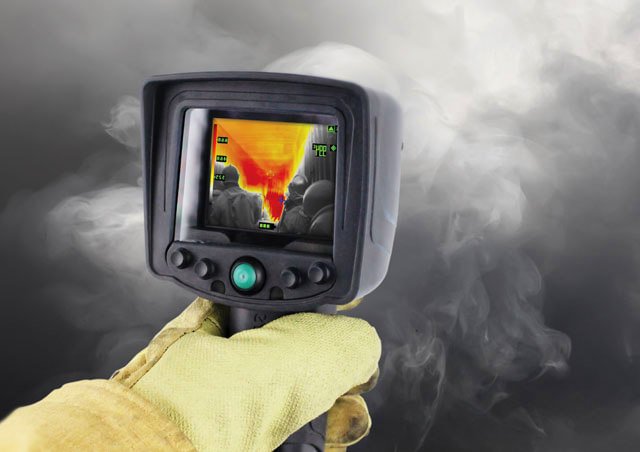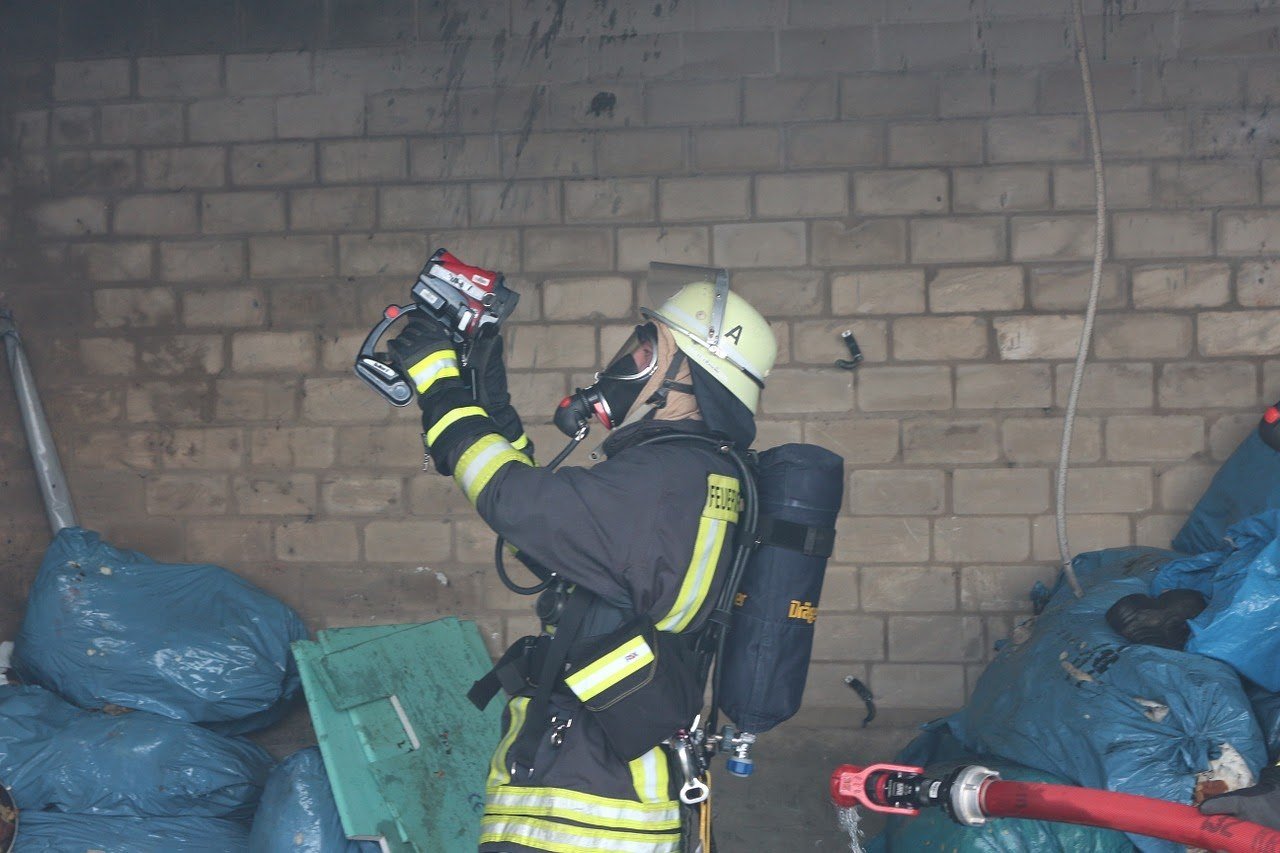What is a thermal camera?
The thermal camera, not to be confused with the infrared camera used by the military during night interventions, allows detect heat waves (infrared radiation) given off by a living body or materials.
It allows firefighters to prevent the risk of re-fire after a fire by looking for hot spots that could create a new disaster. It is also useful when search for victims during a fire or in the rubble. The colors displayed on the device represent the temperature distribution in order to facilitate direct reading: each color in the image corresponds to a temperature.
It is important to choose a camera with a wide range of temperatures in order to guarantee the device reliability and especially the safety of firefighters. When the maximum detection temperature of the camera is exceeded, the image is saturated and it is no longer possible to clearly see the contrasts on the screen. Indeed, from 600 and 650 ° C, the triggering of a flashover (instant fire phenomenon) could not be apprehended with a device with a range of 500 ° C.
What are the main functions of a thermal imager?
– Allow a search for victims effective
– Facilitate hot spot detection after a fire to plan a new fire start
– Allow the localization of fire risks
– Allow a rapid progression in a smoke-filled environment
– Detect ventilations, overheating electrical circuits and dangerous parts during fires
Infrared rays emitted by a heat source do not go through walls Where any other solid. The camera does not pick up through the glass, the infrared ray is reflected there. In the case of thick fumes, temperature readings may be less precise, just as when a material obstacle is present.
The use of a thermal camera does not require no training because of its ease of use.

How to use a thermal camera?
The thermal imager is mainly used duringfires by firefighters, it offers advantages for getting around faster in the fumes by giving them landmarks. It also allows find hot spots in certain partitions only if they do not exceed a certain thickness. If the thermal imager is useful for anticipate risks, it does not exempt from human judgment. Firefighters always exercise a visual and tactile control in order to measure the risks that may possibly remain on the scene of the fire and in its surroundings.
A thermal camera maybe also equipped on a drone in order to obtain a view in low angle flames, both indoors for the roofs and the structure of the building and for the fire itself if it is outdoors.
Regarding the search for victims, the thermal camera allows a rapid identification of victims in a smoky atmosphere or to low light. the field of view is important when using the thermal imager, the vision captured by the camera is lower than that of human vision. It is necessary to use the scan technique, it consists of visually scan using the thermal camera the entire volume in which the rescuers progress. The most important areas are the sol for the identification of victims and ceiling for the risks associated with the progression of fumes.


